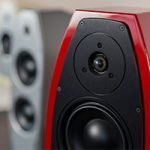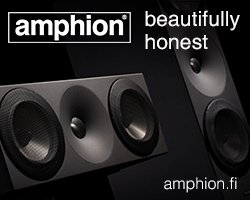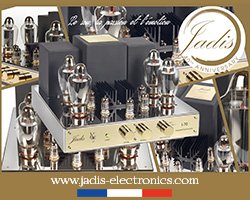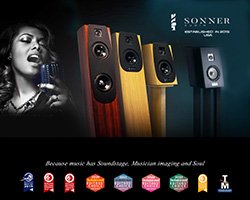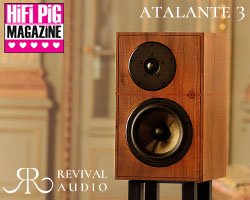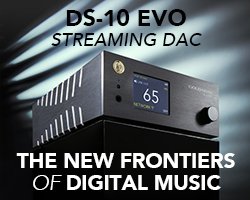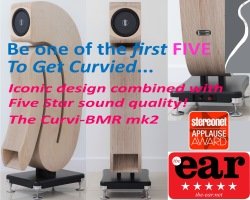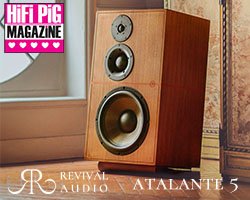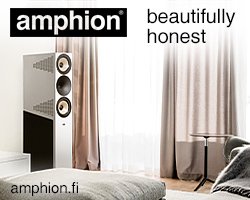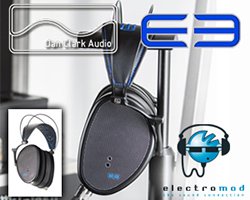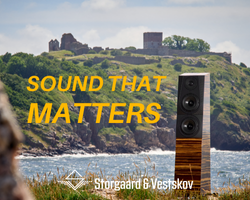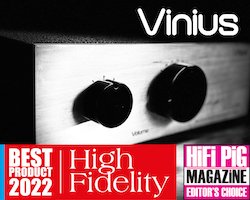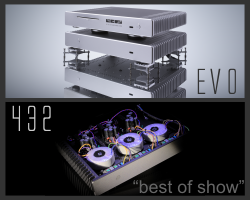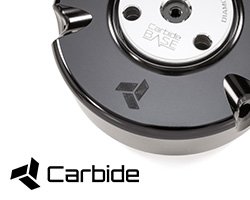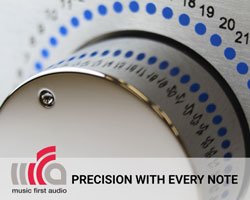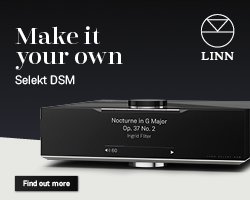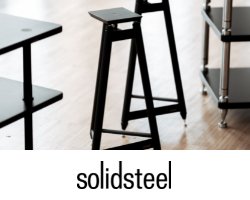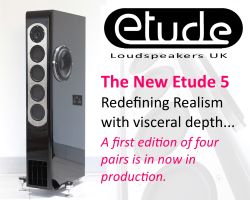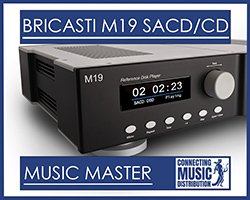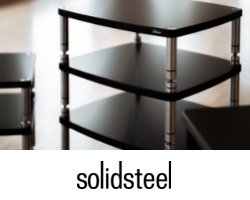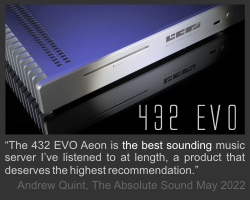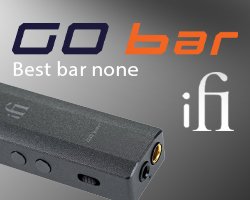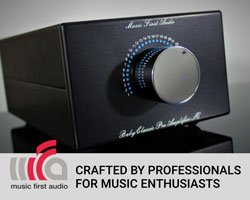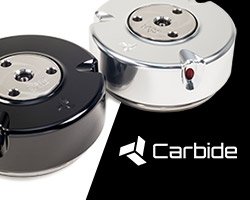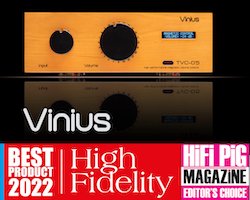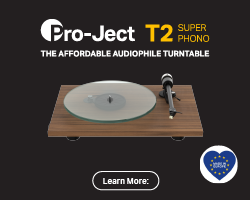DIAPASON KARIS III LOUDSPEAKERS
Diapason is an Italian loudspeaker manufacturer, and in this review Alan McIntosh gives their £4000 Karis III standmounters a listen.
Speakers are boxes, well, apart from open baffles and horns…but you get my drift! Often plain of shape, often sharp-cornered, often plain black. Then sometimes we get outlandish esoteric shapes that polarise and excite in equal measure and then in the middle are the craftsmen taking that plain old normal box and refining it with the quality of materials used, the shape of the cabinet, the finish, and, of course, the drivers and crossovers. This latter pitch is where Diapason suggest they play and as a brand that is new to me I was looking forward to hearing how it turned out.
DIAPASON KARIS III BUILD AND FEATURES
Unpacking the Diapason Karis III’s from their box and soft cotton bags you can’t help but be immediately seduced by the beautiful workmanship of the designer Alessandro Schiava and possibly surprised at the heft of what is, after all, a compact stand mount speaker. The faceted cabinets are formed of solid and wonderfully organic to-the-touch Canaletto Walnut with lovely rounding on each edge. This Walnut, I’m sure, contributes to the heavier than unexpected 4.5kg of each speaker (heavier than it sounds in your hands) and Diapason advises it also adds structure to reduce unwanted cabinet resonance.
The KARIS III are quite petite, with a face dimension of just 190mm (W) and 285mm (h) and they have a depth of almost the same at 260mm.
Binding posts are of exceptional quality and mounted onto a rather attractive and solid-looking metal disc assembly which closely mounts (on the interior) the specially designed thick PCB board crossover circuitry and Van den Hul internal wiring. The fast high pass filter is set at a 3000hz crossover point.
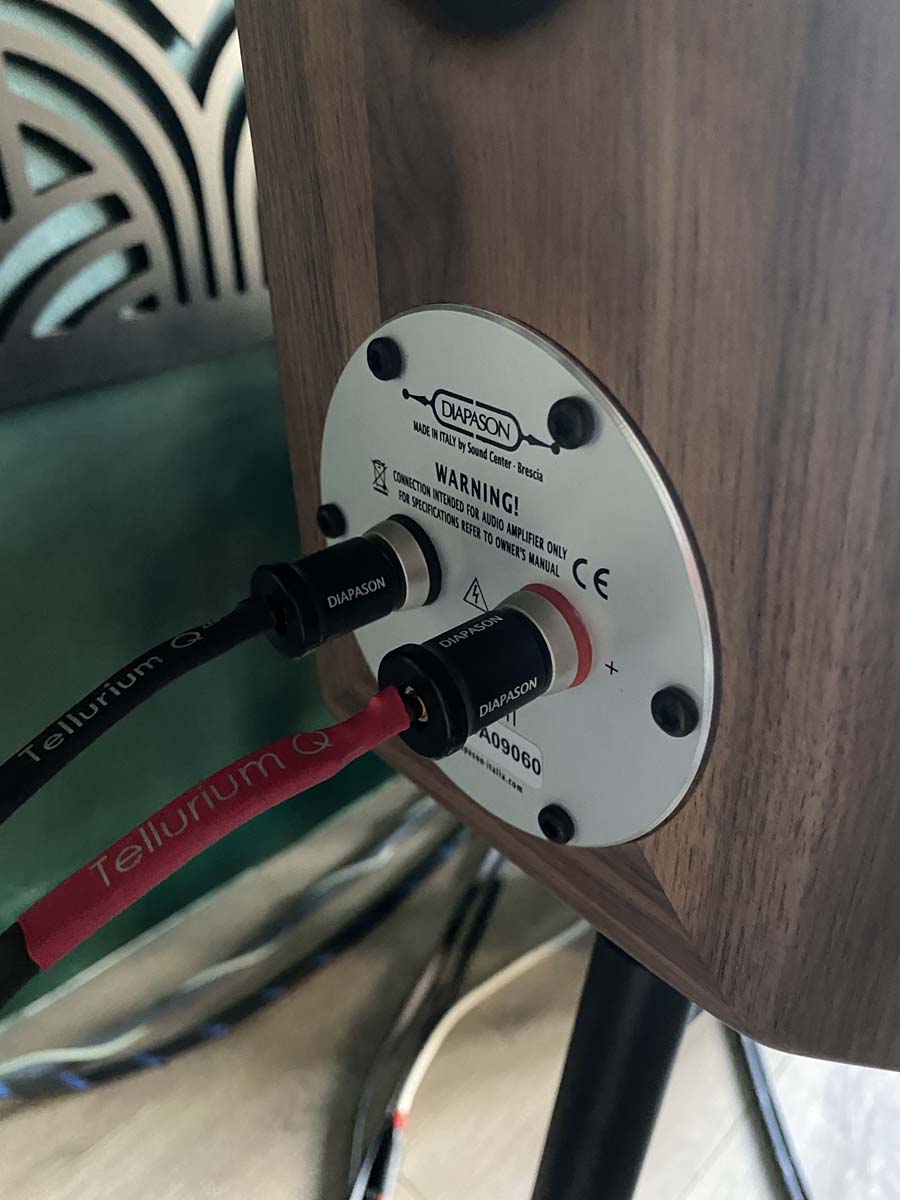
Around the back of the Karis III loudspeakers
Rear-ported, the business end is a combination of 110mm Direct Drive Polymetylpentene woofer (no I don’t know what it is either, but some googling suggests it’s a thermoplastic often used in laboratory conditions) and 19mm treated silk dome tweeter. The Direct Drive nature of the woofer allows connection directly from the binding posts without a Low Pass filter – designed to offer a fast and faithful bass response, says Diapason.
Diapason does offer a matching custom stand, however, these were not included in the review and instead I used my Solid Steel stands set to a height that seemed to match best with my seating position. Aesthetics overall are very attractive and at home, feedback has been universally very warm to them – I have greatly enjoyed looking at them, quite aside from listening to them.
Rated at 75w, a nominal 8ohm and a sensitivity of 87db – however neither the Prima Luna Prologue nor Hegel 190 had any issues at all driving them at all.
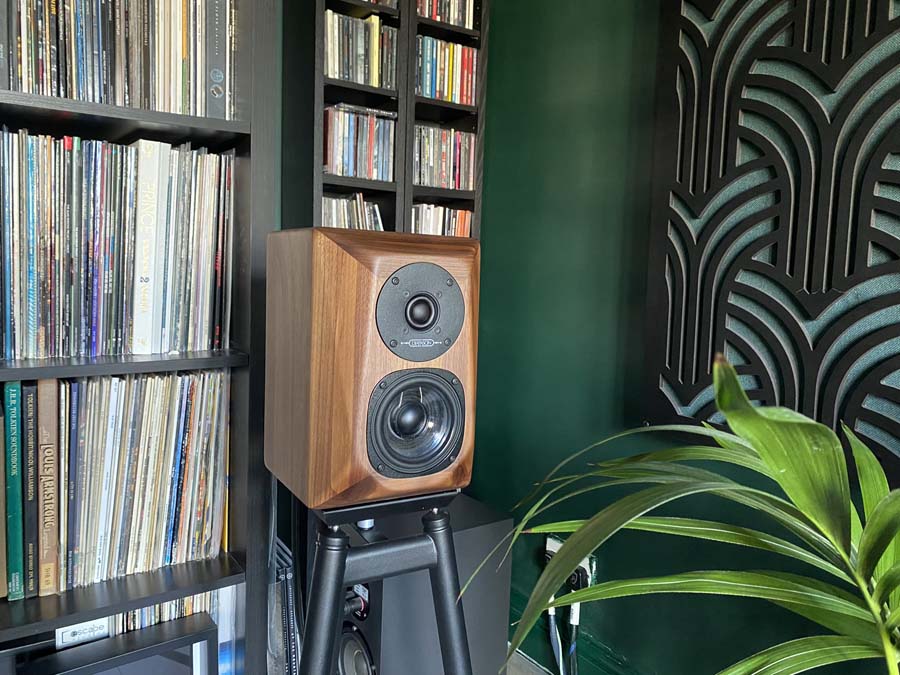
Alan used the Karis III on his own SolidSteel stands but dedicated stands are available
LISTENING TO THE KARIS III LOUDSPEAKERS
I’ve been running the Karis’s now for a few weeks in my main room. Its relatively small at a little over 4mx3m (although it is high) and have been pairing the speakers with both my reference Hegel 190 and my recent addition, the Prima Luna Prologue 1 (with a quad of lovely “Flying C” El34’s) plus employing my Amphion Argon 3s’s for relative contrasting merits. As always, I’ve taken a long journey through my music collection, including many favourites and from genres as diverse as Prog Rock, Chamber Music, Jazz, and Techno – and pretty much everything in between (including spoken word). I’ve also used some key and very well-known test pieces, but mainly I was looking at comparisons and how well these speakers suited my ears, the room, my music, and how well they paired with each amp. One great benefit of stand mounts is it is pretty easy to swap them in and out, with minimal repositioning to be able to compare in near to real-time. I dread to think about the backache involved in doing reviews between behemoth floor standers (Stu, our ed, I know can testify!).
Listening initially centred around jazz standards and recent pieces from Joe Lovano, in particular “Trio Tapestry” (ECM) which really showed off the Karis’s handling of sensitive acoustic material, carefully holding and then elevating the intimate, fragile finger work of pianist Marilyn Crispell and the monastic-like percussion of Carmen Castaldi and allowing the emotional pieces to breathe easily and naturally without any over-sweetening or unwanted polish. Similarly, with Dexter Gordon’s Tanya, the tight bass and rhythm and slap of percussion had me tapping along as Gordon’s brass opened up into the room. The mid-bass was delivered very well, leaving just a smidge of more liquid width and depth desired. Gordon’s sax play sounds wonderful, vivid and very “here”.
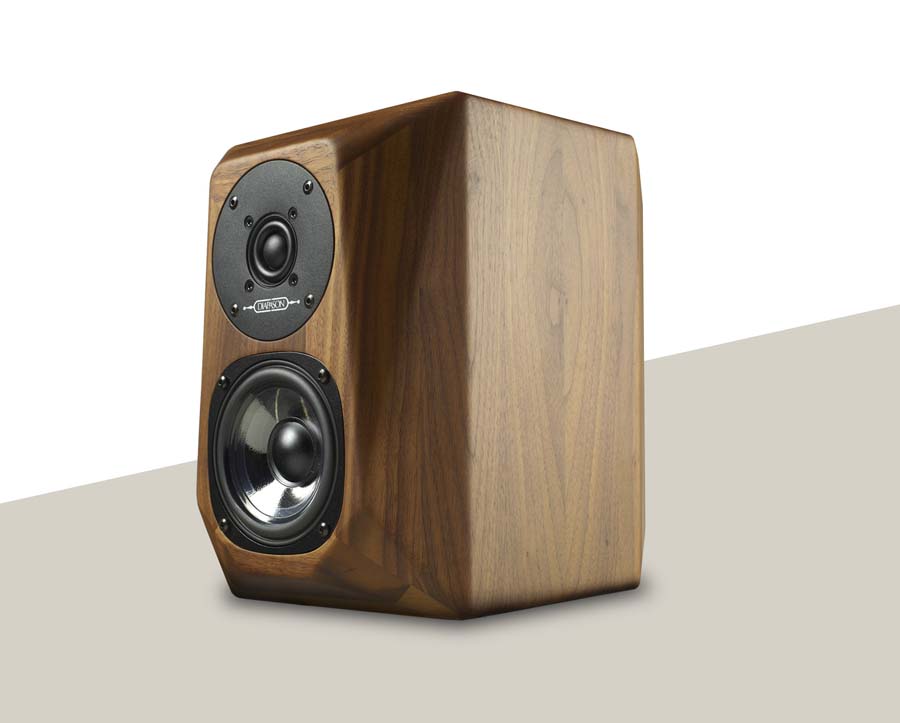
From the side showing off the solid Canaletto walnut staves construction and interesting shape.
Over the next few days, I wanted to further test overall dynamics and that bass extension (the Karis’s are rated at 60-20KHz) so dug out the Blade Runner 2049 OST (Hans Zimmer & Benjamin Wallfisch). This album pushes systems dynamics from top to bottom and left to right, back to front! In most areas the Karis’ represented themselves admirably – those synth stabs and pans redolent of machinery screaming at an increasingly synthetic world falling into dystopian pain filled my room well, however, what should have been floor-shaking bass just wasn’t quite there, the small cabinet Karis’s understandably unable to really get down that low or wide – of course, this may be an advantage in some rooms.
That said, on Sultans of Swing (Dire Straits, Money for Nothing 2022 at 192/24, Qobuz) the bass, while not super deep, is lovely and well rounded out, tightly controlled and softens the landing so to speak. Versus the Argons, they may be less bottom-heavy, but mid and uppers, guitar work, percussion, and voices are free to extend and have fantastic pace and separation. Where, for me anyway, the Amphions provide an end-to-end precision, I did find the Karis’ edging the excitement more at times, surprising me on occasion and frequently inviting me to lean in and sit up more, even at more restrained volumes.
With Tangerine Dream (Sensing Elements, Quantum Gate/Quantum Key, 24/44 Qobuz) the pinging tone synths are free to dance and decay and that synth bass bounces along superbly with the whole track seeming lighter of touch than with the Amphions.
Recently I’ve been exploring the back catalogue of the likes of Steely Dan, Alan Parsons, and Manfred Mann’s Earth Band and with these records, it’s been clear the Diapasons are very well suited to both the right amplifier pairing and the right music – more focused in the mid-bass and highs for guitars, acoustic drums and voice elements like prog rock – the Prima Luna pairing was more engaging and rich, losing none of the detail and energy, while the Hegel was more polished and controlled.
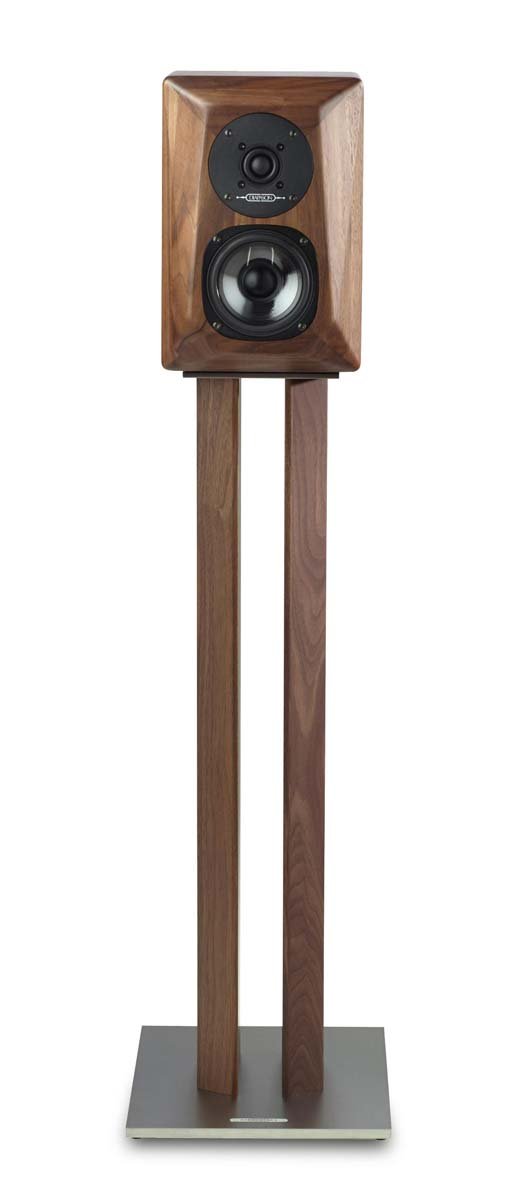
And on their own stands
CONCLUSION
As with most things in audio and HiFi, a lot comes down to the recipe and environment, and by that I mean the various ingredients employed in listening from source material right through your chain and including your room and tastes.
While at times when paired with the Hegel and listening to material that was by its nature a bit more forward, I felt the Karis’ were perhaps becoming too polished and clinical, edging over time into ever so slightly fatiguing. However, with the valve-based Prima Luna, they really came to life, becoming more textured across the sonic spectrum, breathing life into most material and presenting such a lively, detailed and multi-dimensional presentation that I often found myself nodding my head , tapping my feet and just thoroughly engaging with the music.
The speed and lightness of touch of the Karis’s are not to be sniffed at! Their handling of rock, jazz and human voice is simply wonderful and the Hegel only accentuates this sharp focus and accuracy.
Unsurprisingly, due to cabinet size, they will struggle to reach deep and deliver the fullest of bass extension – but that’s what subwoofers were invented for (and I do notice some retailers offering the Karis’s paired in such a way).
They will joyfully fill a smallish room like mine very well, but may start to get a little confused when pushed to late-night volumes. What they will do, however, is exalt and excite from mid-bass up, and what they do there is quite jaw-dropping at times.
For me, a non-sub user, these are still a truly joyful speaker and I’m really quite sad to see them go!
AT A GLANCE
Build quality:
Beautiful craftsmanship and materials
Sound Quality:
Tight bass with incredible transparency and dynamic
Three-dimensional reproduction in the mid and higher registers
Imaging is startling at times and speed and detail are a joy
Won’t reach the deepest bass some may seek and very loud playbook is not the aim here
Pair better with a less neutral or clinical amplifier in my opinion for the most joyful experience
Value For Money:
Combining materials, design, build and sonic delivery the price point feels about right but not cheap (£4000/pair), but you may need to consider sub-woofer costs
We loved:
Build quality
With prog, jazz, and voice they excel sonically and look exceptionally beautiful doing it
Speed, realism, and accuracy of sound
We Didn’t Love So Much:
System synergy is a consideration and bass is somewhat restrained by cabinet size
Elevator Pitch Review: An exceptionally beautifully designed and implemented loudspeaker, eminently capable of delivering transparency and presence like few others and which plays the music without restraint or colour in a natural walnut-crafted cabinet.
Price: £4050

Alan McIntosh
Review Equipment: Origin Live Calypso Mk4 Turntable, Illustrious Tonearm, Titanic Model A cartridge, Gold Note PH10 Phono Stage/PSU, Auralic Aries G1 Steamer, Hegel HD30 DAC, Prima Luna Prologue 1, and Hegel H190 Amplification, Amphion Argon 3S (for comparison). Audioquest Water USB, WyWire Blue and Atlas Element Interconnects, Tellurium Q Black II Speaker Cable. Solid Steel Speaker stands. Room treatment by GIK Acoustics. Titan power across the system.
SPECIFICATIONS
Frequency response: 60/20.000 Hz
Bass Driver: 110 mm Direct Drive Polymetylpentene
Tweeter: 20 mm silk soft dome
Efficiency: 7 dB/1W/1m
Freq. crossover: 3.000 Hz
Nominal impedance: 8 Ohm
Min. impedance: 7,2 Ohm/300 Hz
Type: rear-ported reflex speaker
Finish: Canaletto walnut solid wood, Natural Wood finishing
Weight per speaker: 4,5 Kg
Dimensions speaker: (w x d x h) 190 x 260 x 285 mm












































